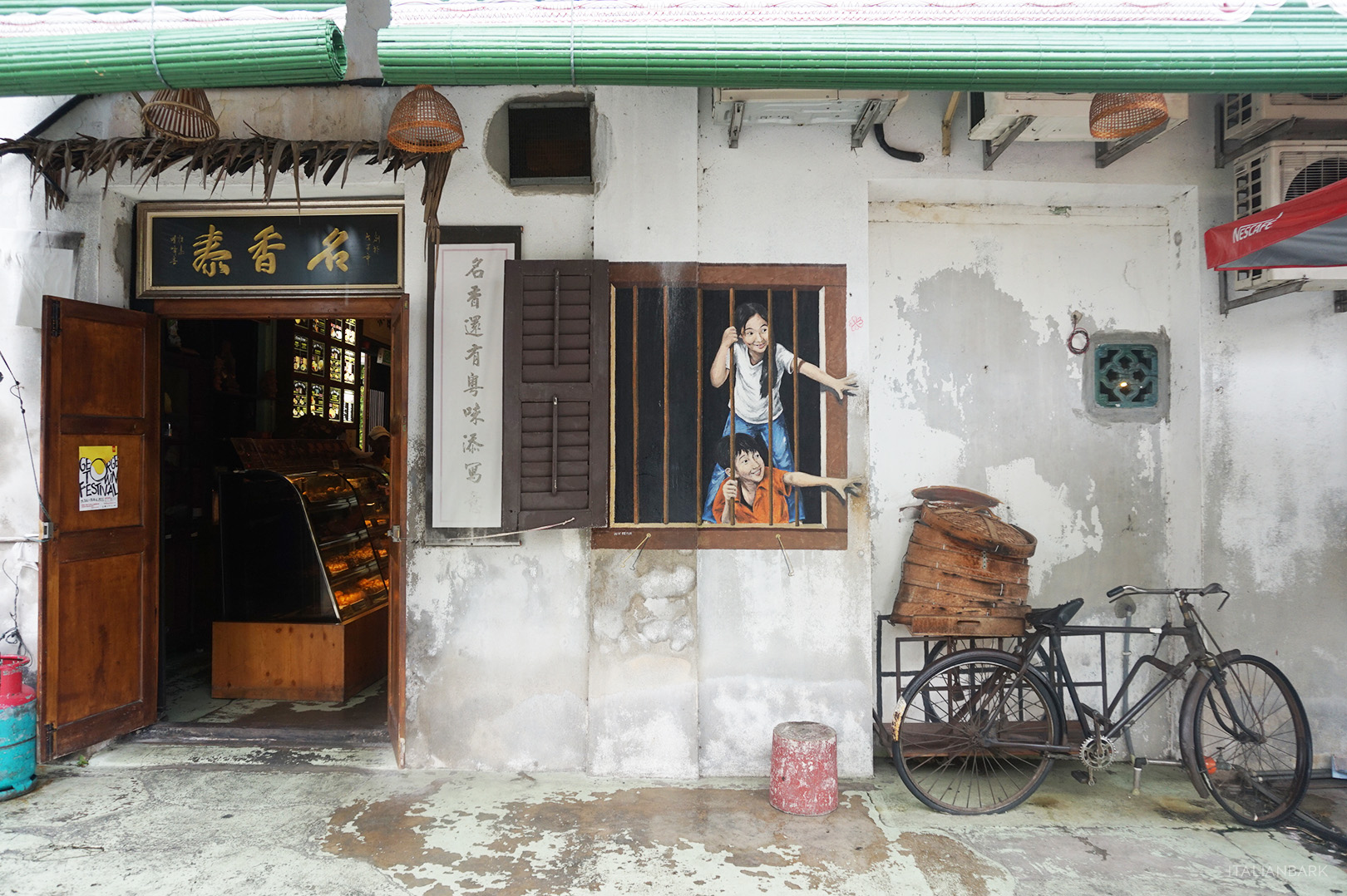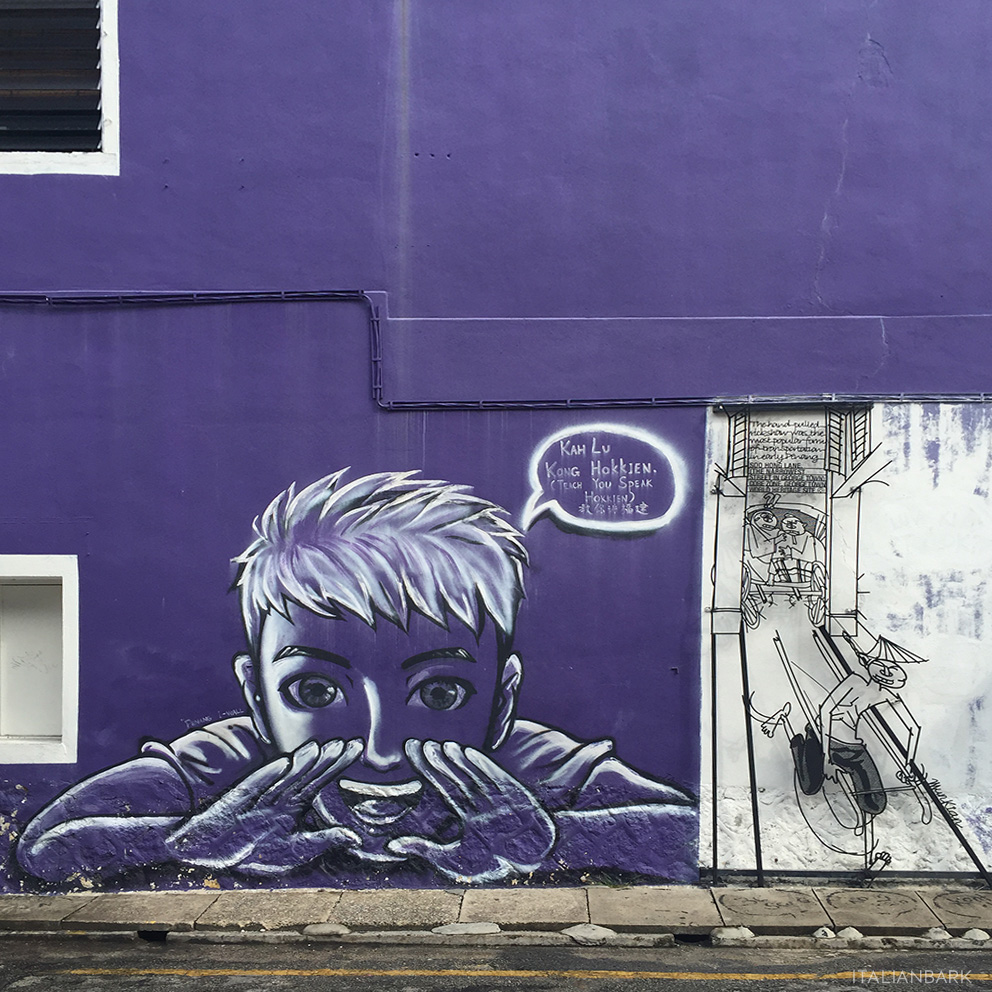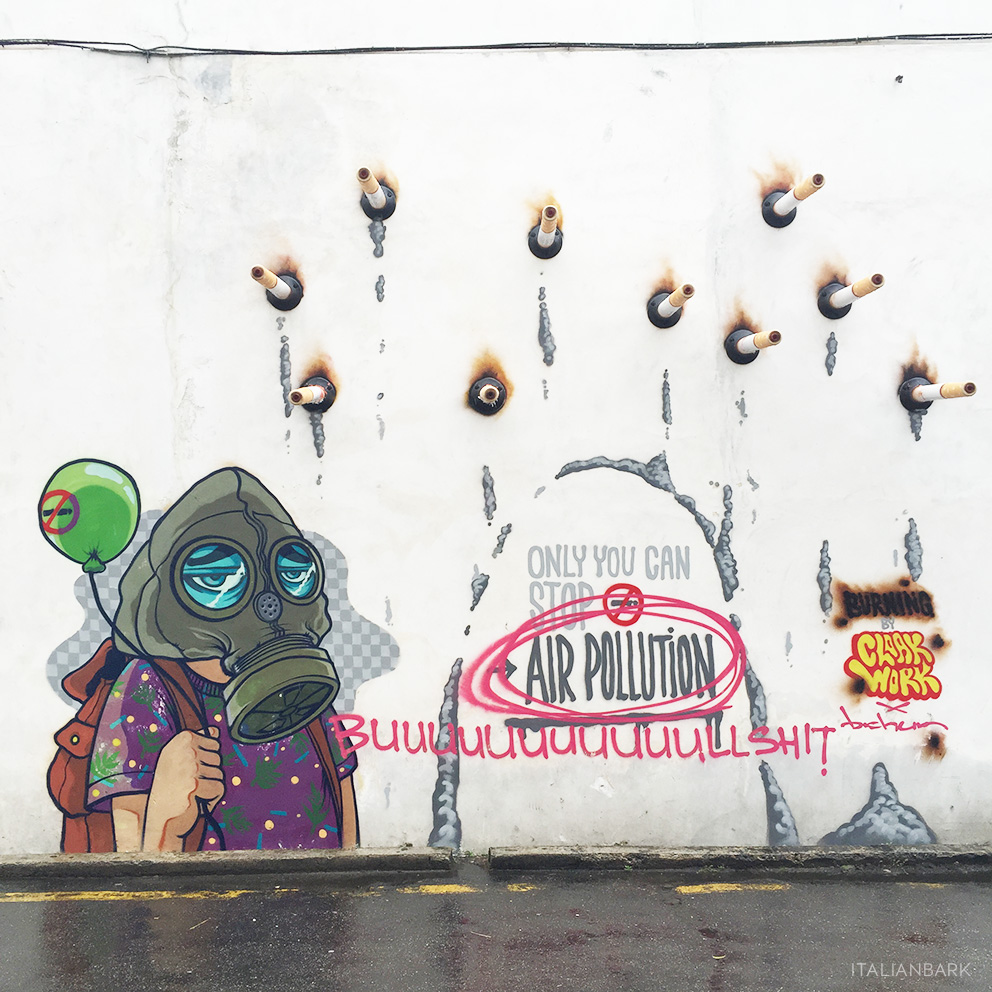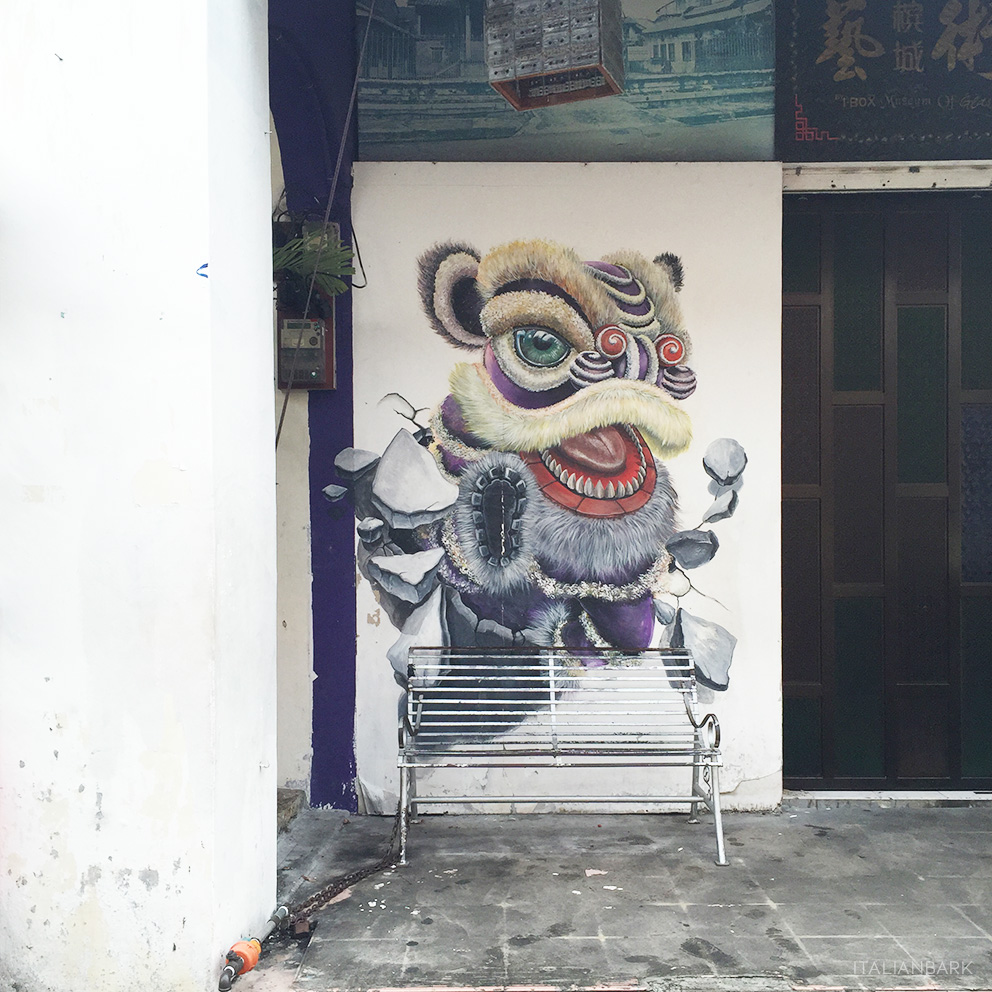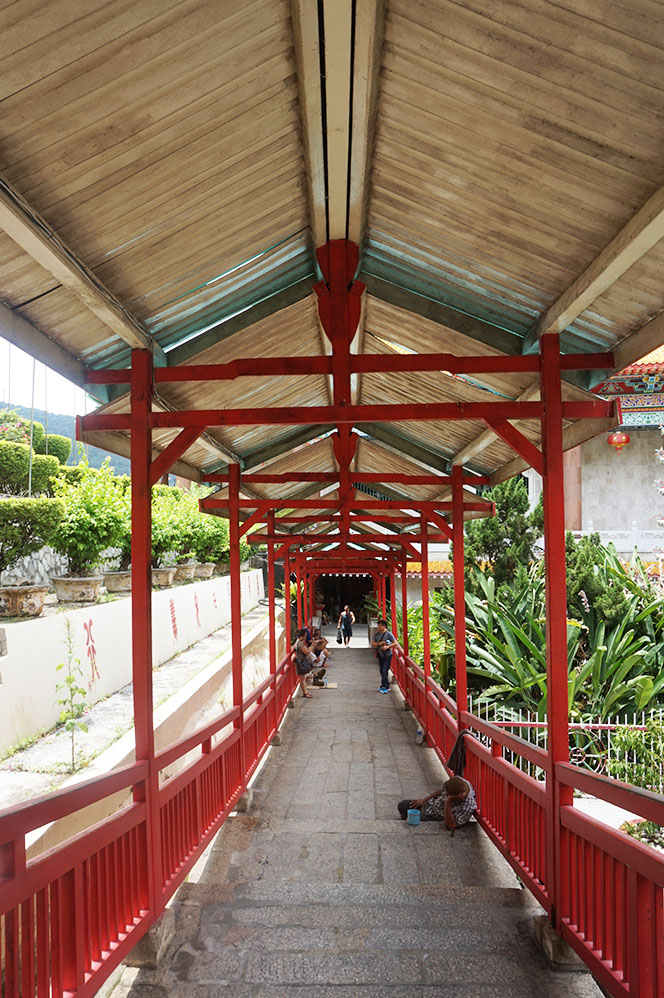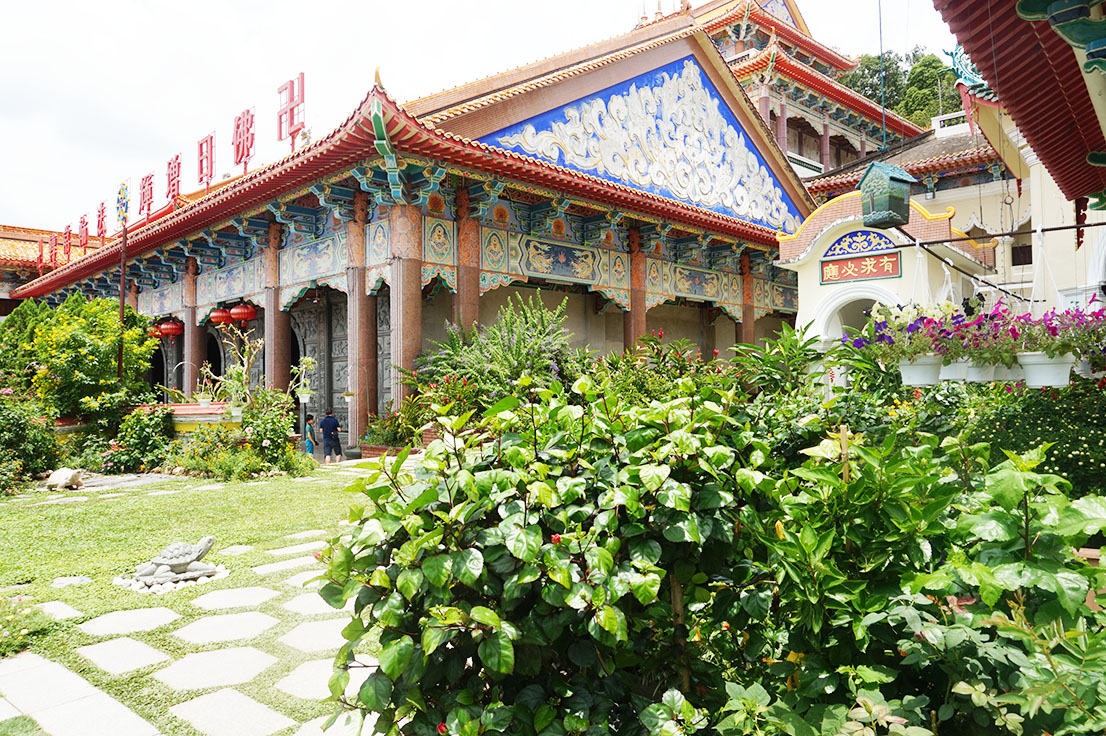Today I’m telling you something about the most fascinating part of my travel to Malaysia and Singapore. That place where I really found myself thinking “ok, here we are, in the other side of the world”: Penang and its capital Georgetown.
Located Northwest of Malaysia, Penang is largely an island region, and one of the favorite holiday destinations of the Chinese and the Malays. It is known as “Pearl of Orient” for the colonial and ethnic look and story of its capital, as well as for its nature and for its beaches.
If you want to see something really unique, you have to walk in the streets of its capital Georgetown.
::
Oggi vi parlo della tappa più affascinante del mio viaggio in Malesia e Singapore. Quella in cui proprio mi sono ritrovata a pensare “sono dall’altra parte del mondo“per la sua forte diversità con le nostre città e la nostra cultura occidentale: Penang e la sua capitale Georgetown.
Collocato a nord ovest della Malesia, Penang è in gran parte una regione insulare, una delle mete di villeggiatura preferite dagli Orientali e la zona malese con la maggiore presenza cinese. Viene chiamata “Perla d’Oriente” per il fascino coloniale ed etnico della sua capitale, oltre che per la ricchezza di natura e per le sue spiagge.
Ma, se volete vedere qualcosa di davvero unico, dovrete girare per le strade della sua capitale Georgetown.
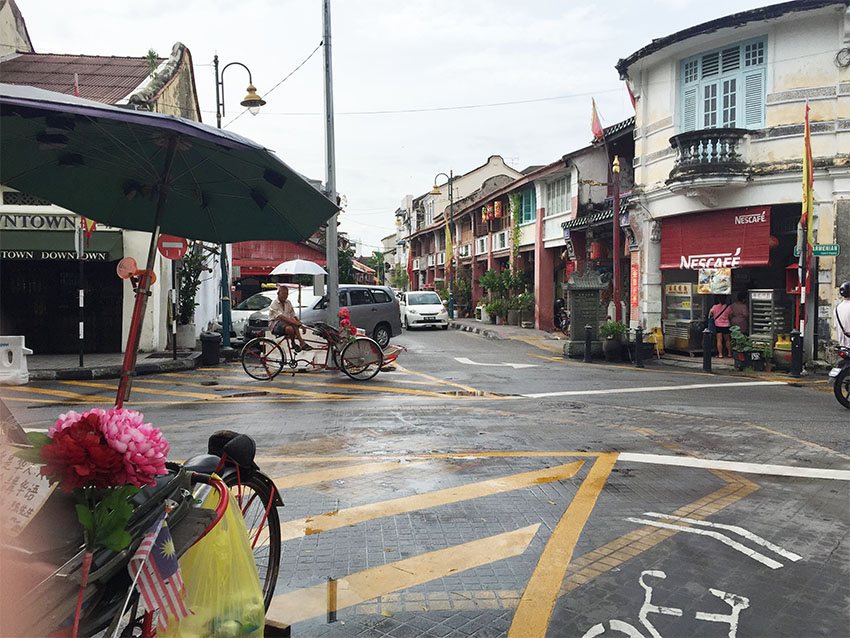

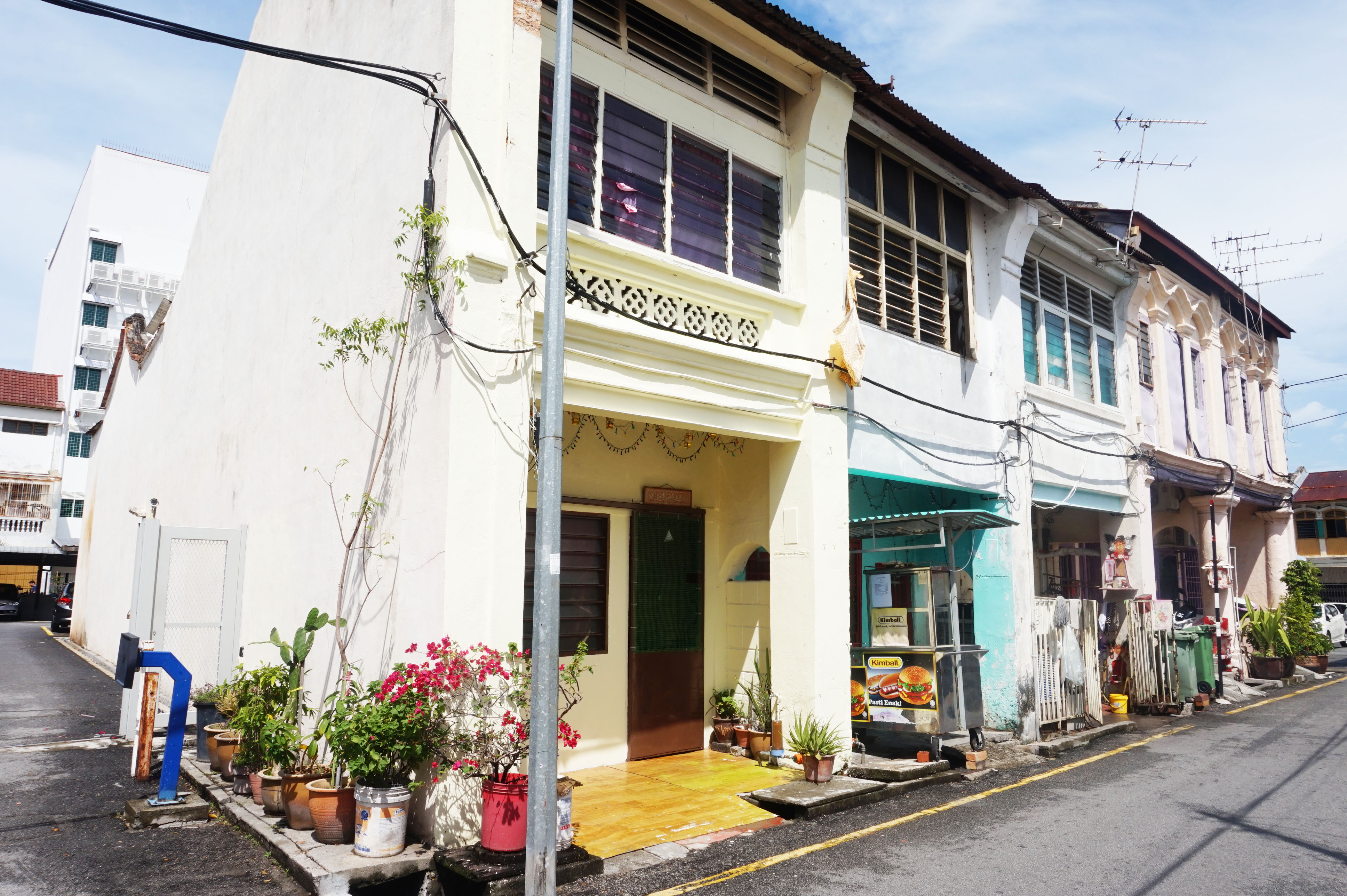
Georgetown historic center was declared UNESCO “World Heritage” and perhaps it is the most intact and attractive Chinatown in the world. Georgetown is a Chinese city, dominated by Cantonese and Hokkien, and by different other ethnic such as Hakka, Hainan, and Foochow, with some areas inhabited by Indians and Malays. The center, which develops around the main artery of Lebuh Chulia, is a series of narrow streets and shophouses in pastel colors, historical workshops, of trishaw traffic, of cars and scooters, but also of temples, Buddhist, Hindu, churches, mosques. This amazing cultural meltin’pot is what really impressed me about Malaysia
In a similar context it’s even more weird: Georgetown is also full of street art. And it’s also an unusual thing for an Asian city.
::
Dichiarato dall’UNESCO “Patrimonio Mondiale dell’Umanità“, il centro storico di Georgetown conserva moltissimi edifici originari ed è forse la più intatta ed attraente Chinatown esistente al mondo. Georgetown è una città cinese, dominato da cantonesi ed hokkien, e in misura minore da etnie hakka, hainan e foochow, con alcune zone abitate da indiani o malesi. Il centro, che si sviluppa attorno all’arteria principale di Lebuh Chulia, è un susseguirsi di vicoli e shophouse in colori pastello, di botteghe storiche, di traffico di trishaw, auto e scooter, ma anche di templi, buddisti, indu, chiese, moschee, edifici di culto di tutti i tipi. Ma quest’ultima caratteristica è un po’ il bello di tutta la Malesia ;)
Sembra davvero insolito in un contesto simile: Georgetown è anche ricchissima di street art . Ed è una cosa davvero strana per una città asiatica.
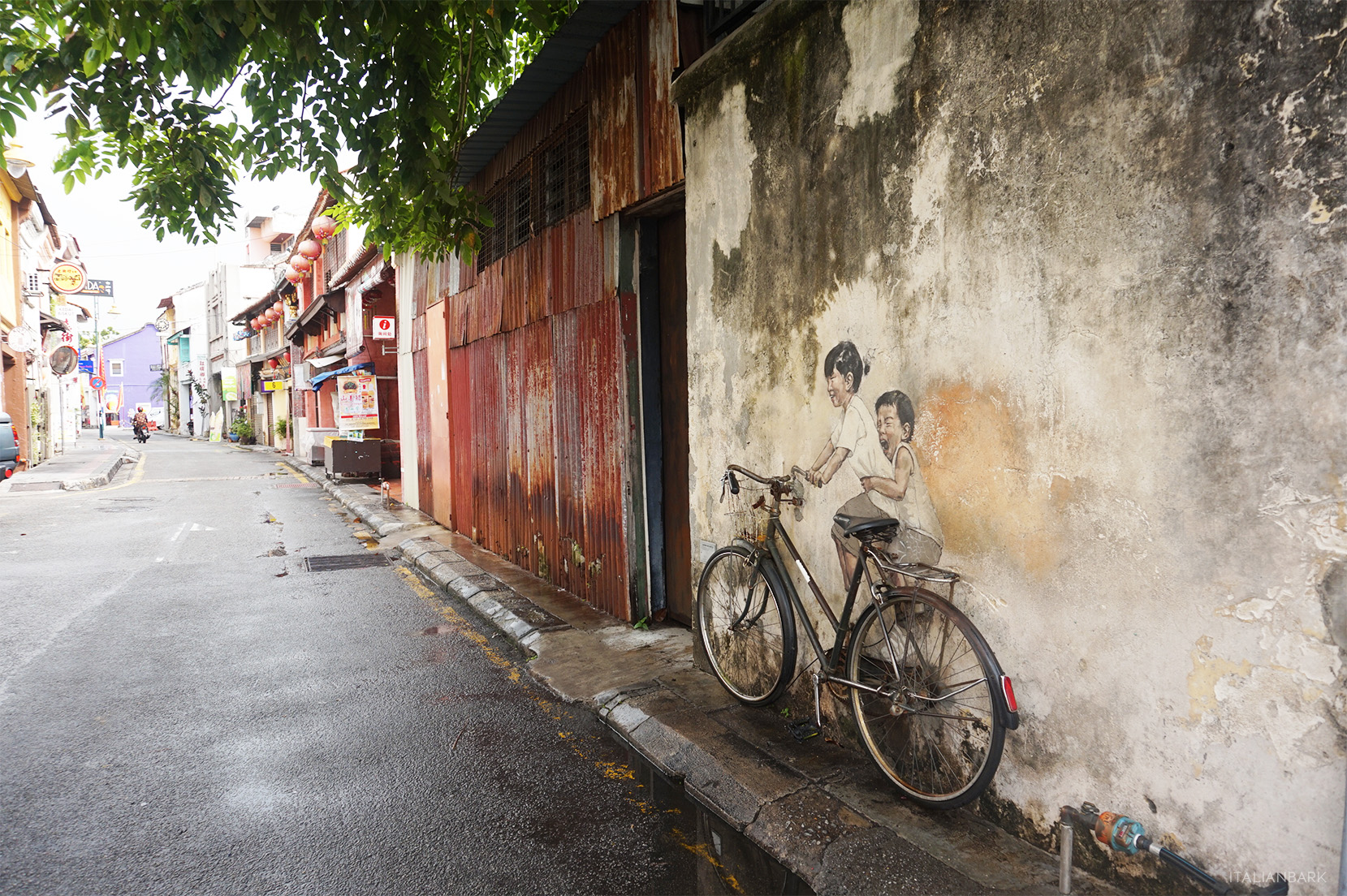
Street art in Georgetown, Penang
Street art has begun here in Penang as a way of enhancement of the Unesco historical heritage.
Starting in 2009 with Marking George Town: a competition initiated by Penang state Government to physically brand the city, as UNESCO World Heritage Site. The winner was Sculptureatwork “Voices from the people” series: 52 iron rod sculptures installed to different city walls, to tell anedoctes of the streets.
La street art a Georgetown, Penang
La street art ha iniziato a prendere piede qui a Penang proprio come mezzo di valorizzazione del patrimonio storico.
Inizia nel 2009 con il programma Marking George Town: una vera e propria gara indetta per dare nuovo carattere alla città, da poco definita dall’UNESCO Patrimonio dell’Umanità. E’ qui che nasce la serie di Sculptureatwork “Voices from the people” con caricature a fil di ferro che potete trovare in punti strategici della città e che raccontano curiosi aneddoti delle strade in cui si trovano. In tutto ce ne sono 52!

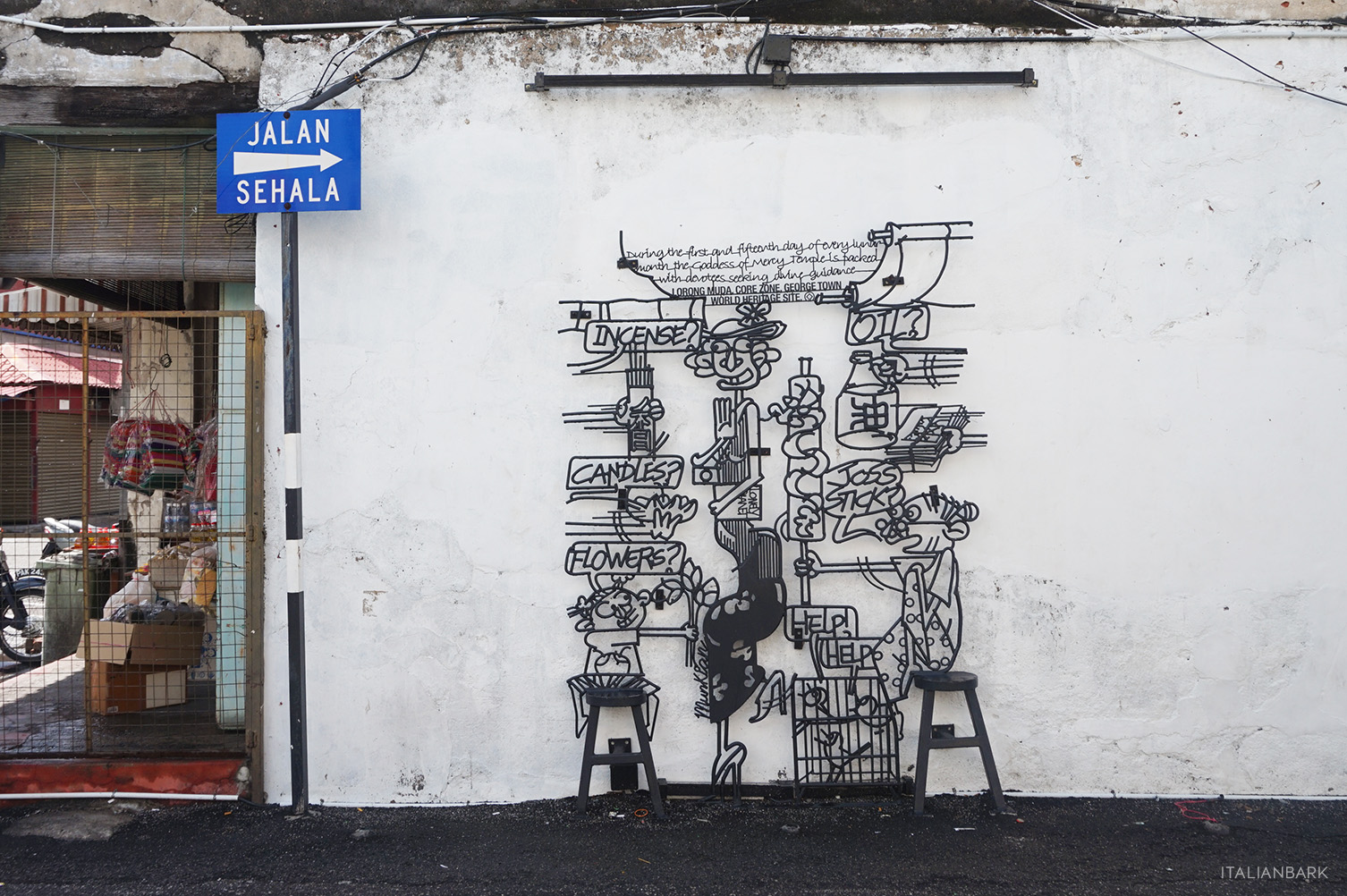
::
The program follows in 2012 with another idea: London-based artist Ernest Zacharevic was commissioned of a series of street art called Mirror George Town, including the famous “Kids on Bicycle“that became the city icon. Since then, several other artists have contributed to the street-art popularity of Georgetown.
In hotels and touristic centers you can find a dedicated map with all the street-art: we had fun in discovering the city chasing these points, finding also many new ones.
I share this as a beautiful sample of co-existence between old and new, and a way to use street art to add value to history of a city: this means design as well, and we can learn from this!
::
Il programma prosegue nel 2012: l’artista lituano-londinese Ernest Zacharevic viene commissionato per dipingere una serie di murales intitolata Mirror George Town, tra cui il famoso “Kids on Bicycle” diventato simbolo della città. La serie ha dato seguito anche a molti altri interventi di artisti della street art, facendone una delle zone più vivaci dell’estremo Oriente in materia.
Le opere sono mappate in piantine che potrete trovare nelle varie strutture turistiche: noi ci siamo divertiti a scoprire la città proprio partendo da questi punti, scovandone anche tante di nuove.
Io l’ho trovato un esempio bellissimo da condividere con voi convivenza tra vecchio e nuovo, e di come la creatività di strada può valorizzare una città: il design è anche questo, e c’è di che imparare!

Do not miss in Penang | Da non perdere a Penang inoltre…
KHOO KONGSI
The Khoo Kongsi is a large Chinese clanhouse with elaborate and highly ornamented architecture, the grandest clan temple in the country
I Kongsi sono le cosiddette “case del clan”, create nel XIX secolo per dare protezione agli immigrati cinesi. Khoo Kongsi è il più grande della Malesia, e con un’architettura decorata in maniera straordinaria
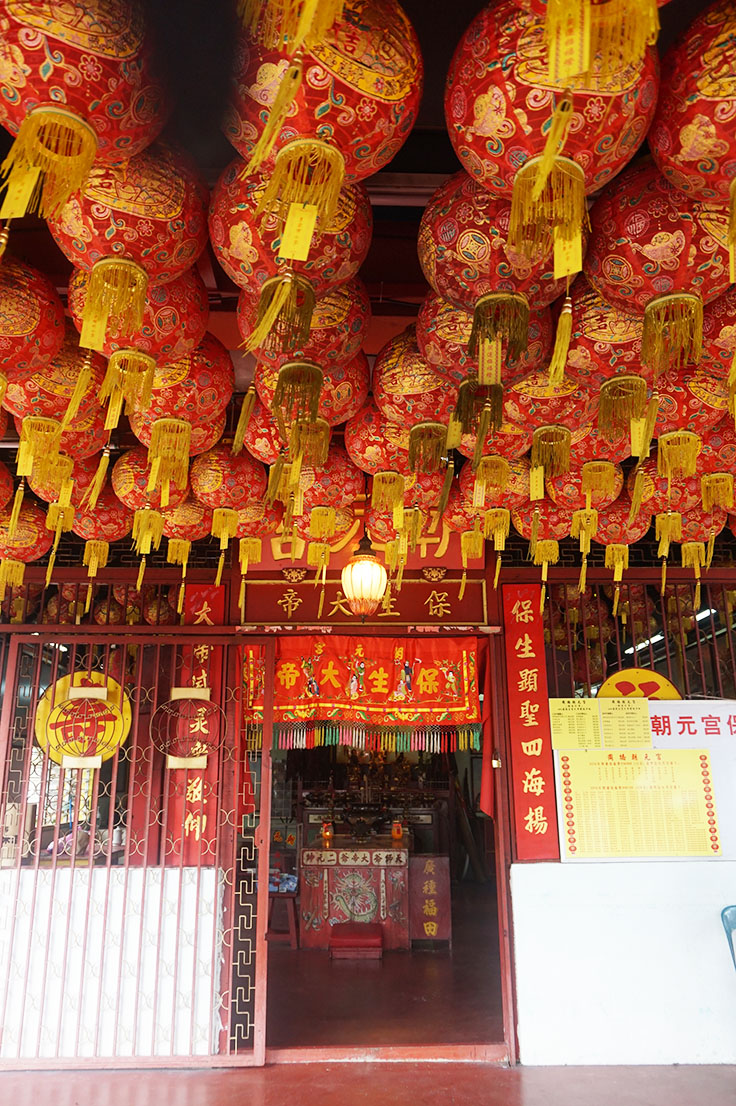
LITTLE INDIA
Here, as well as in Kuala Lumpur and in Singapore, there’s an Indian area called Little India. Here there is even loud Bollywood music from the sides of the streets
Come a Kuala Lumpur e a Singapore, anche Georgetown ha una propria Little India. Con tanto di casse che trasmettono musica Bollywood ai lati della strada
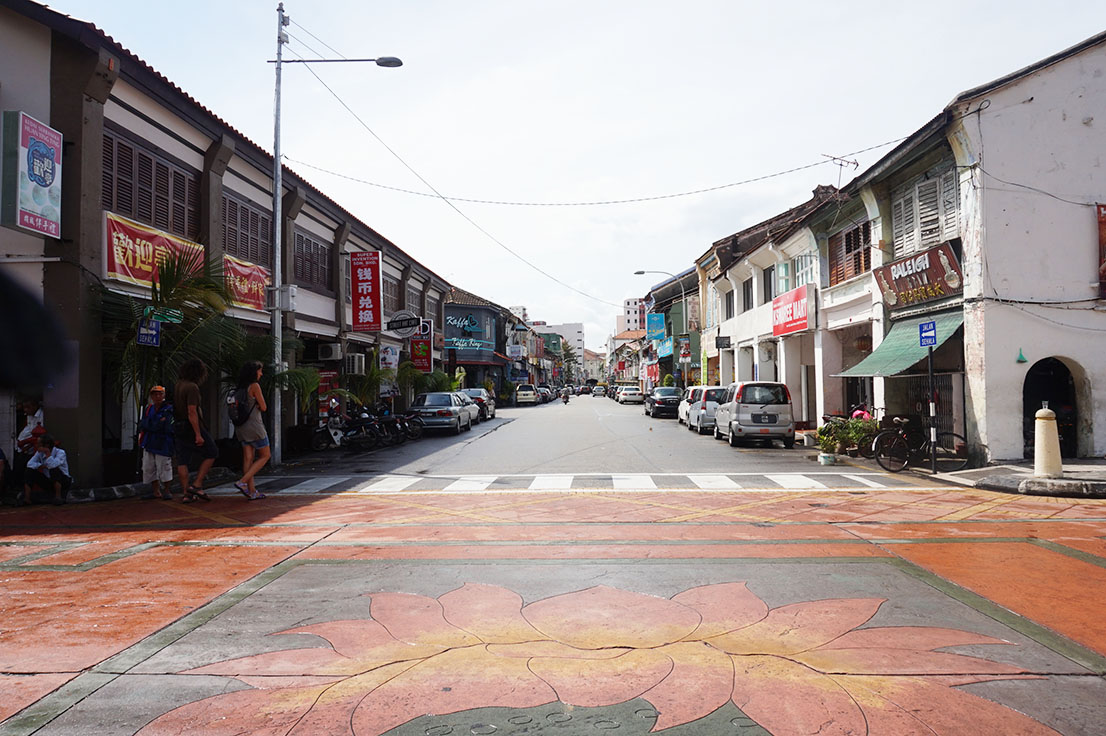
KEK LOK SI TEMPLE
Kek Lo Si, or the Temple of supreme bliss, is the largest Buddhist temple in Malaysia and one of the country’s icons.
It’s a really amazing place that I highly recommend you to visit. Located on a hill, you have first to climb a long corridor filled with traditional Chinese stalls, reaching then the beautiful upper garden. An unique space, full of flowers, sculptures, colours, sounds, with the extraordinary Pagoda of Ten Thousand Buddhas, a golden tower of thirty meters.
Kek Lo Si, o Tempio della beatitudine suprema, è il più grande tempio buddhista in Malesia, e una delle icone del paese.
E’ un posto davvero incredibile che vi consiglio di visitare: per raggiungere la parte alta, dovrete prima passare attraverso un lungo corridoio in salita pieno di bancarelle cinesi, per poi arrivare nello splendido giardino superiore. Uno spazio stupendo, pieno di fiori, statue, colori, suoni, che termina con la straordinaria Pagoda dei Diecimila Buddha, una torre dorata di trenta metri.
CLAN JETTIES
Another unique experience is a walk in the Clan Jetties, a complete wooden village on stilts above the water where Chinese clans do live also at present, still with old traditions and habits. In total there are six villages and in every village lives one clan, with their own temple.
Un’altra esperienza davvero autentica è una camminata attraverso i Clan Jetties: un villaggio su palafitte in cui vivono clan Cinesi, ancora oggi secondo le antiche tradizioni. Ci sono sei moli abitati in tutto, ciascuno appartenente ad un diverso clan e con il proprio tempio.
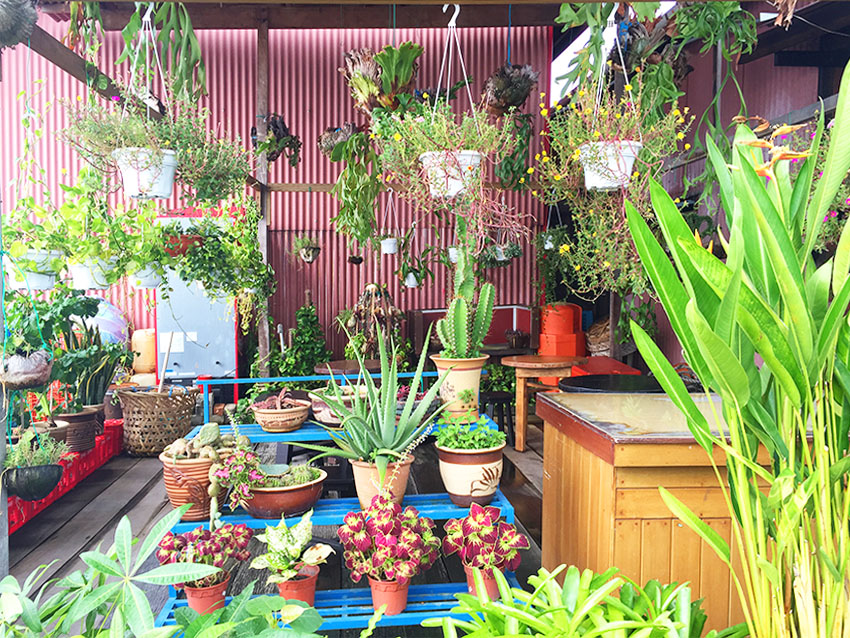
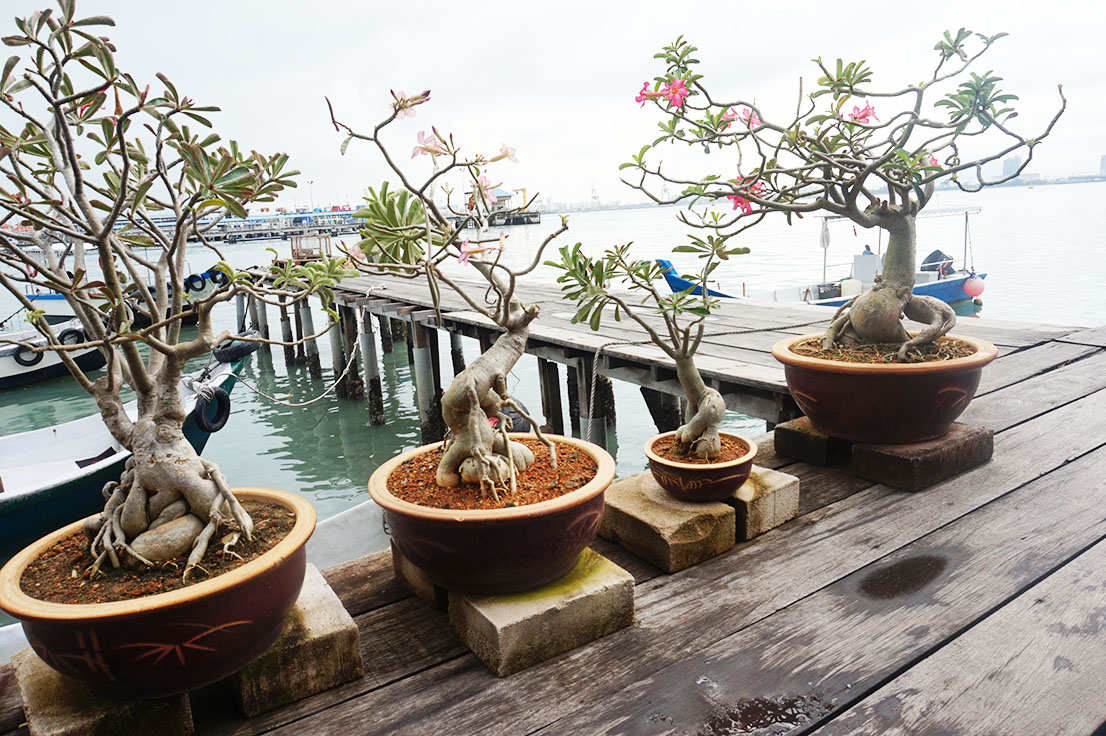
PS: Beaches, if compared to other malaysian areas, are not so good!
PS: Le spiagge qui invece, rispetto ad altre zone della Malesia, non sono nulla di che. Vi consiglio di dedicarvi alla visita della città!
All images ©italianbark


